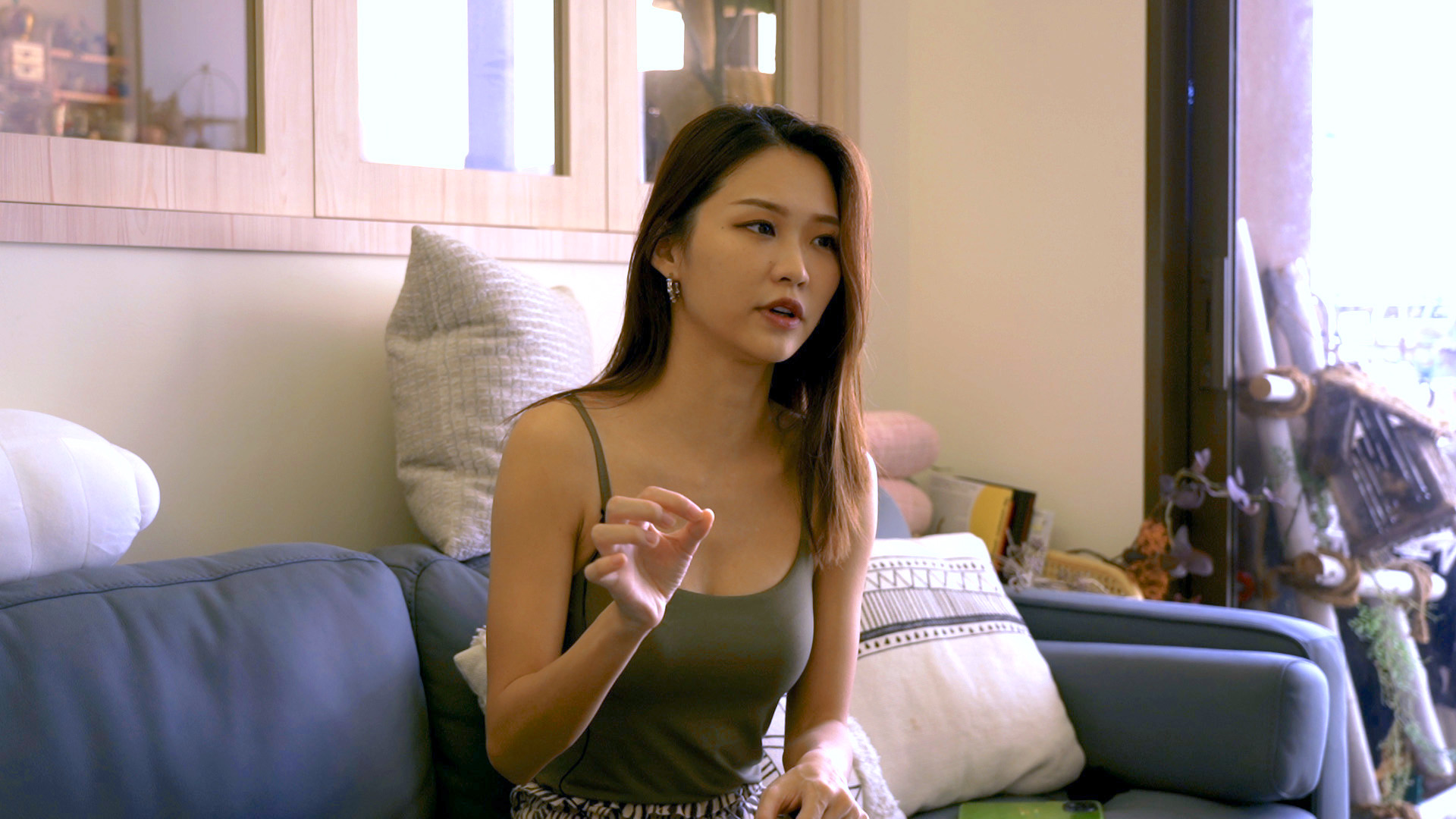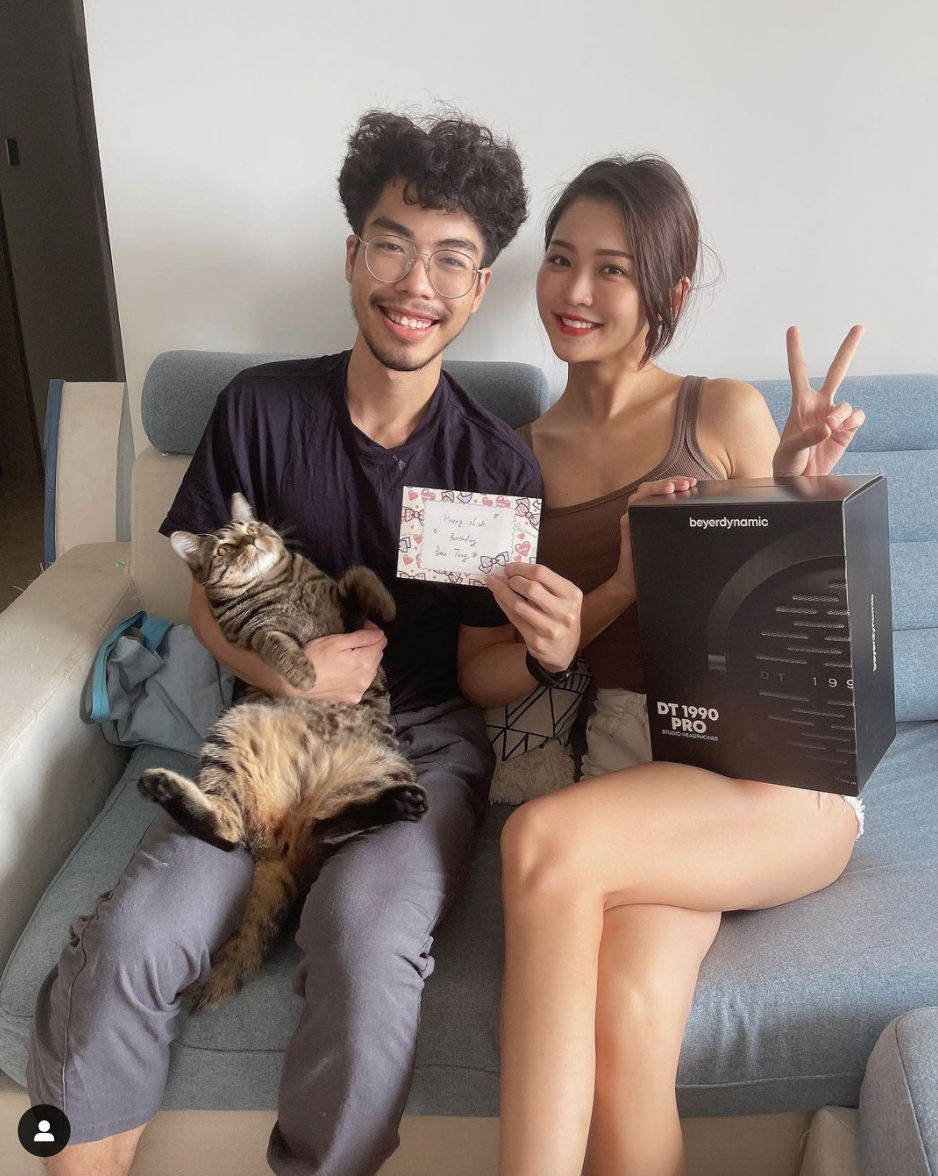fFollow us on Telegram for the latest updates: https://t.me/mothershipsg
With more than 420,000 followers on Instagram and 100,000 followers on Twitter, Irene Zhao is one popular social media user.
"Among the top 10 influencers in Singapore," in her own words.
But you might have heard of her for something else other than her job at influencing the masses.
In January this year, the name "Irene Zhao" entered mainstream consciousness after her photos generated S$7.5 million as NFTs.
NFTs aside, the 28-year-old already has no problem earning good money by creating sponsored content to be published on her feed, thanks to her decent follower base.
In fact, up until three months ago, Zhao was actively doing so, encouraging her followers to swipe up to Shopee links and such.
"Over the six years, I've built good personal relationships with a lot of brands and also have a good network among the Southeast Asia influencer network," the influencer continues by way of introduction.
Sitting in her living room and speaking with her, however, one clearly hears the labour in her tone at having to earn a living through sponsored content.
Compared to Web3 (we'll get to that in a bit), Zhao feels that one of the "pain points" of a traditional social media platform (e.g. Facebook or Instagram—yes these have become "traditional") is that content creators have to constantly create advertisements for an income.
There is no way for them to procure a stable, recurring income through these platforms, Zhao believes.
"[...] We just have to keep making posts, get exploited by your fans, and [it's] like [an] exploitation of your fans right, by selling a lot of ads which, shit, I shouldn't have said that."
 Photo by Mothership
Photo by Mothership
After pausing to our laughter, Zhao continues,
"Anyway, yes. Selling something that you don't really believe in, right? I mean, so many influencers they post shampoo, like five different brands in a month. Do you think they tried all of them? No, no way they're going to try all the different brands. But because they need to make a living, right?"
However, it's not that Zhao disagrees with such means of making a living per se.
"I just don't feel it's my thing," she emphasises.
She adds elsewhere: "Life has been so good without advertisement[s]. Oh my goodness."
And despite having a feed that predominantly features self-portraits, the influencer confesses that she doesn't actually enjoy taking photos of herself.
"So for the past four or five years, I've been posting every single day. So that's the dedication I put into being an influencer. And I just realised I really don't like to take pictures. I don't enjoy doing it."
 Photo by Mothership
Photo by Mothership
Even with a sizeable following (and by correlation, higher rates for sponsored content), being an influencer has always been a side hustle for the 28-year-old.
Prior to her NFT venture, Zhao was mostly in traditional finance, a job she's since quit to focus on her new company, So-Col.
So here we are.
But what's So-Col, and more importantly, what's an NFT? And what's Web3?
Some technical explanations
When we ask Zhao to explain these concepts to us in layman terms, she says, "Shit," before moving on to enlighten us.
 Photo by Mothership
Photo by Mothership
On Web3, the influencer says,
"So Web2, [it's] social media like Instagram, YouTube, you don't really own your content. So for example, if Instagram one day wants to shut down your content, you have nothing left, right? The post doesn't belong to you.
While in Web3, everything is [...] backed by blockchain technology, you own your content. Means if someone buy[s] your content as NFTs, they can buy, they can sell, they can trade, then you will make a profit. While nobody can like trade your Instagram post, right? Yeah, that's the main difference between Web2 and Web3."
Very good. We vaguely understood that.
A harder concept to grasp might be NFTs, which Zhao also breaks down for us:
"So NFT stands for Non-Fungible Tokens. The difference is like for example, think of Sing dollar, there's no difference between 101 S$1 and another S$1, right. But for non-fungible [tokens] there is like a number attached to it. So then S$1 of a single one and the other one is totally different, because [they] have different numbers."
It's a good explanation, but it also feels like one that might require some existing background knowledge on NFTs.
So here it is, courtesy of a rather reliable source.
An NFT is essentially a non-interchangeable unit of data stored on a blockchain (a decentralised network/database), as a digital ledger that can be sold and traded.
NFTs are typically associated with digital files such as photos, videos, and audio.
And as Zhao also mentioned, each token is uniquely identifiable.
The lead-up to IreneDAO
With the technicalities out of the way, one can hopefully better appreciate how Zhao came to be associated with the S$7.5 million IreneDAO collection, the series of NFTs made from Telegram stickers of herself.
In Jan. 2021, the influencer was introduced to the crypto space by "a group of best friends in university."
Back then, Zhao was already the chief marketing officer (CMO) of a decentralised finance project, according to her LinkedIn page, and overlapping with that, a commodity broker.
She tells us that she's had this idea for NFTs since last year, and also credits it to her So-Col co-founder, Benjamin Tang.
At the time of our conversation, Tang is in the U.S., "joining some big events in crypto."
 Tang and Zhao. Photo via @ben.tang on Instagram.
Tang and Zhao. Photo via @ben.tang on Instagram.
However, the two were busy with their respective jobs, and only rekindled the idea in Oct. 2021, when they realised that "no one in this industry is doing this thing."
So Tang quit his travel startup (which Covid-19 had gotten its fingers into, anyway), while Zhao left both her CMO and broker jobs.
The pivot was not too hard for Zhao, who already had her foot in the door.
"Because also I am already an influencer in the crypto space, and I'm also an influencer [on] Instagram. So I think there's a kind of connection between these two. So I think it's [an] easier transition for me to do crypto full-time."
And we all know how that turned out, with the whopping success of IreneDAO.
Although the NFT collection generated S$7.5million in total, Zhao is quick to clarify that she did not take a single cent from the earnings, despite talk that she was to be apportioned 10 per cent in royalties.
"Yeah, they wanted to, but then we changed the committee, the committee of IreneDAO. And then I took back control of the DAO. And I decided not to take any money from it. So not even 10 per cent."
In the end, 50 per cent of the sum was used to run the DAO, while another 50 per cent went to charity.
(Note: DAO stands for decentralised autonomous organisation. One can get access to the IreneDAO community by buying its NFTs, or "tribe passes", on NFT marketplace OpenSea.)
If you're confused, Zhao gives us a glimpse of how "control" over a DAO works.
For instance, she could initiate a proposal, which committee members get to vote on.
A single IreneDAO pass equates to one vote, and responses get recorded into the blockchain that powers the pass. If more than 50 per cent of the members agree on the proposal, it gets approved.
Not a cash grab?
 Photo by Mothership
Photo by Mothership
Besides community, another thing Zhao that really emphasises during our interview is the charity aspect of her project.
The funds go towards fighting child sexual exploitation, she says, and it's also a large part of what So-Col is doing.
However, Zhao understands why the general public—especially those who have scant understanding of NFTs—might view her collection as a "cash grab."
"I think it's very normal for like Web2 people who don't understand anything about NFTs to think it's a cash grab, because most often, NFT projects in this space right now [are] kind of a cash grab.
They don't really have a roadmap, or they say they have a roadmap, but after they sell all [the] NFTs, they don't really care about the community anymore.
So I think I understand why people have this misconception about NFTs, but what we are trying to do here is to make sure that ourselves, we don't take any profit from it."
But one salient point you might raise is: how does that enable Zhao to stop selling ads on Instagram for income?
Zhao doesn't exactly answer this question, but only reiterates that neither she nor her company are drawing a salary from IreneDAO.
Her role is with So-Col, she adds, and so if we had to hazard a guess, we'll park the cost of her salary under the company.
Helping other influencers monetise their content
 Photo by Mothership
Photo by Mothership
On a macro level, the IreneDAO collection is a "proof of concept" for So-Col—evidence that the company can feasibly exist and operate.
So-Col, short for social collectables, is a decentralised social networking platform where content creators and influencers can convert their social media content into non-fungible collectible items.
It aims to help content creators monetise their content, as well as build communities with their fans.
Cointelegraph quoted Zhao describing it as a “decentralised version of OnlyFans, Discord, Twitch and Patreon.”
Before So-Col's success with IreneDAO, however, Zhao had difficulty convincing investors to part with their money.
Zhao explains that while there's decentralised finance and decentralised gaming, there was no such thing as decentralised social media prior to So-Col.
"Many people have done it in the past few years, but nobody has succeeded. And there is no killer app in this space yet."
She adds:
"So I'm pretty happy that after the success of IreneDAO, more and more people start to believe in the concept of [a] creator economy in the Web3 space. And we are the kind of the first one who proved it can be successful."
Zhao discloses that she's gotten "a lot of requests" from her creator friends, as well as from "much more famous" creators that she does not know personally, to join So-Col.
"They're also pretty sick of doing advertisements," she says.
 Photo by Mothership
Photo by Mothership
But does this mean that only well-known content creators will be able to own successful projects like IreneDAO?
Zhao thinks not.
According to her, this is what So-Col is for—to help other personalities make and run their own DAOs, as long as they have a base of more than 10,000 followers.
"And because we are pretty new in this space as well, and we are trying to experiment different things like how to run a DAO, how to talk to DAO members, how to communicate with them and how to set a vision where everyone agrees on and want to work towards."
Zhao sells us another perk of working through So-Col, which is its relatively low fees.
Compared to sites like OnlyFans and Patreon, So-Col takes a smaller cut at less than five per cent, so that creators can get into the Web3 space at "very little cost."
However, she cautions those who are thinking of joining the industry just to make a quick buck.
"I think as a creator, if you really want to create a successful NFT series, you have to have a long term roadmap for the project, you have to—there must be some meaning behind NFTs right? And why you want to issue them, and what benefits and what [value] you can bring to the people who actually bought it."
"And if you are just a Web2 influencer who has zero knowledge about crypto, and you just want to do NFTs because you want to make a quick buck [...], there's no way you're going to be successful."
If you like what you read, follow us on Facebook, Instagram, Twitter and Telegram to get the latest updates.
